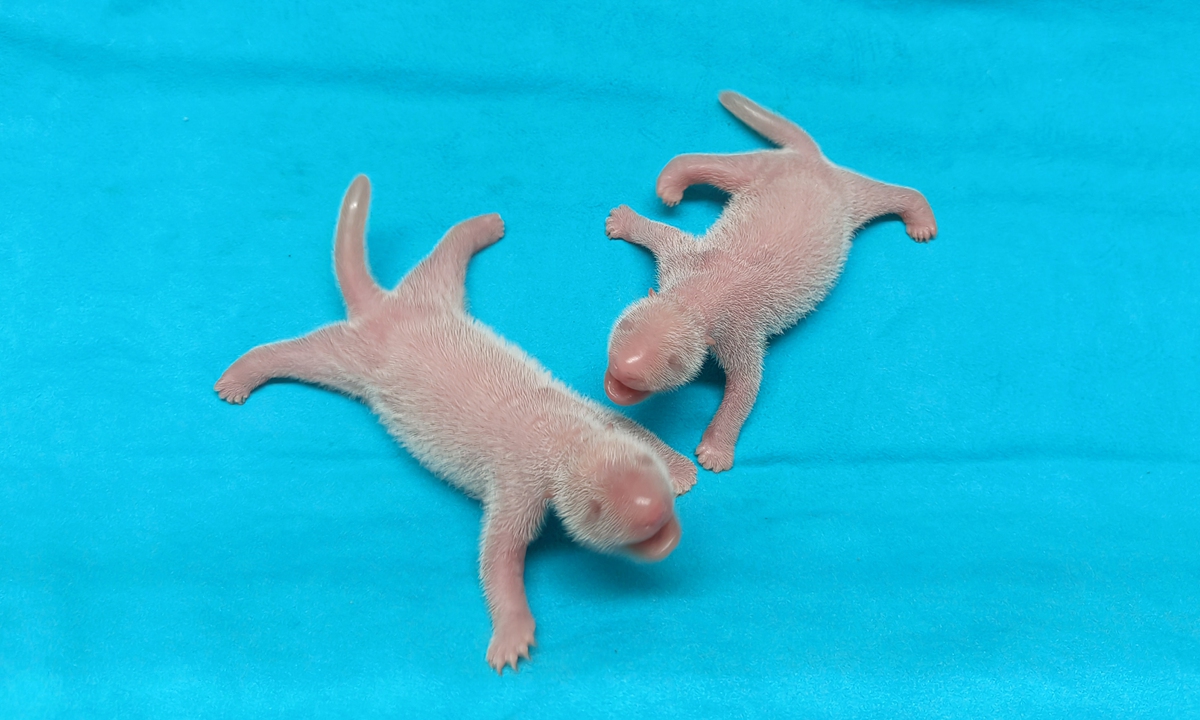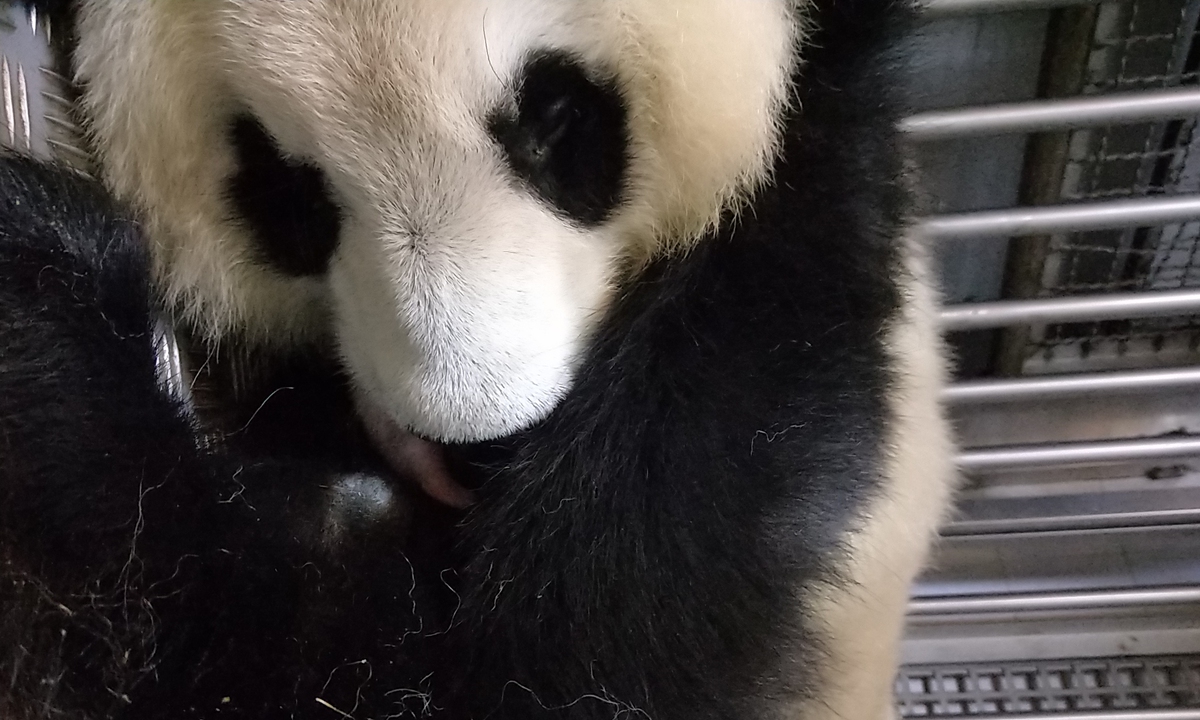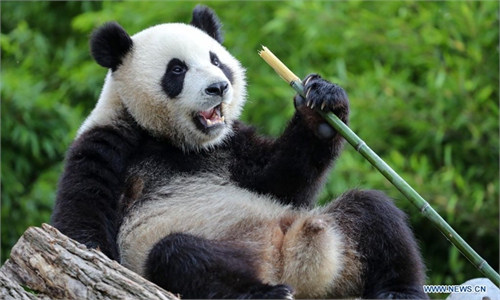More giant panda twins born in 2021 with help of improved artificial breeding techniques

Photo: Courtesy of Chengdu Research Base of Giant Panda Breeding
A giant panda named Hua Zuiba at the Chengdu Research Base of Giant Panda Breeding in Sichuan Province safely gave birth to a set of twins at the Madrid Zoo in Spain on Monday. This is the latest birth of panda twins, following births in Japan, Germany and China in 2021. The arrival of so many twins in the same year is not just some lucky coincidence, but rather was the result of artificial breeding techniques.
The twins born in Spain are a pigeon pair. The male weighs around 0.137 kilograms, far less than the female cub's 0.171 kilograms, an employee at the research base told the Global Times on Tuesday.
The twin cubs' birth was carried out under the guidance of Chinese experts. Since April, when the mom panda was in heat, experts from the base have been tracking her health and cooperating with breeders at the Spanish zoo.
Chinese experts determined that April 13-14 was the best time for successful fertilization based on the panda's behavioral changes and urine hormone measurement results, and guided the Spanish experts to artificially inseminate the panda twice.

Hua Zuiba Photo: Courtesy of Chengdu Research Base of Giant Panda Breeding
Around August 14, Hua Zuiba started to eat less and sleep more, behaviors common for pandas about to give birth. The panda base experts informed the Madrid Zoo and the two parties agreed that the base would send two experts to assist the zoo.
Two experts arrived in Spain on August 31 and began to work with the breeders at the zoo.
Hua Zuiba is not the only proud panda mother to give birth to twins overseas in 2021, two other giant pandas, Huan Huan in France and Zhen Zhen in Japan, have also given birth to twin cubs.
Breeding programs at Chinese zoos have also helped increase the population of this vulnerable species.
Giant panda Mang Zai gave birth to twins on June 10 at the Chongqing Zoo in Southwest China's Chongqing Municipality. The first cub weighed 0.161 kilograms and the second 0.151 kilograms.
Panda experts have explained that the birth of twins is becoming more common as a result of research on artificial breeding techniques. Panda nutrition is another major factor. Captive pandas are more likely to see pregnancies through to term than wild pandas because they have much better diets.
Wu Kongju, a panda expert at the Chengdu research base, said that previously they determined the best time for breeding by observing the estrus behavior - actions that indicate an animal is in heat - of the giant pandas, but for the past decade experts have been using a combination of tracking hormonal changes and observing estrus behavior to seize upon the best window for fertilization.
In captivity, pandas' estrus cycles are monitored at all times. To ensure a successful pregnancy, researchers often carry out the artificial insemination of pandas in addition to letting them mate naturally, the Xinhua News Agency reported.
Using the sperm of two or more males to reproduce can lead to a huge increase in the birth rates of twins or triplets. In this case, it is possible that a set of twins could have two different fathers.
Nutrition is also important to pandas' fertility. Wild pandas have a hard time finding food so have poorer diets than captive pandas. As a result, they generally gave birth to one cub at a time, the Chengdu Business Daily reported.


